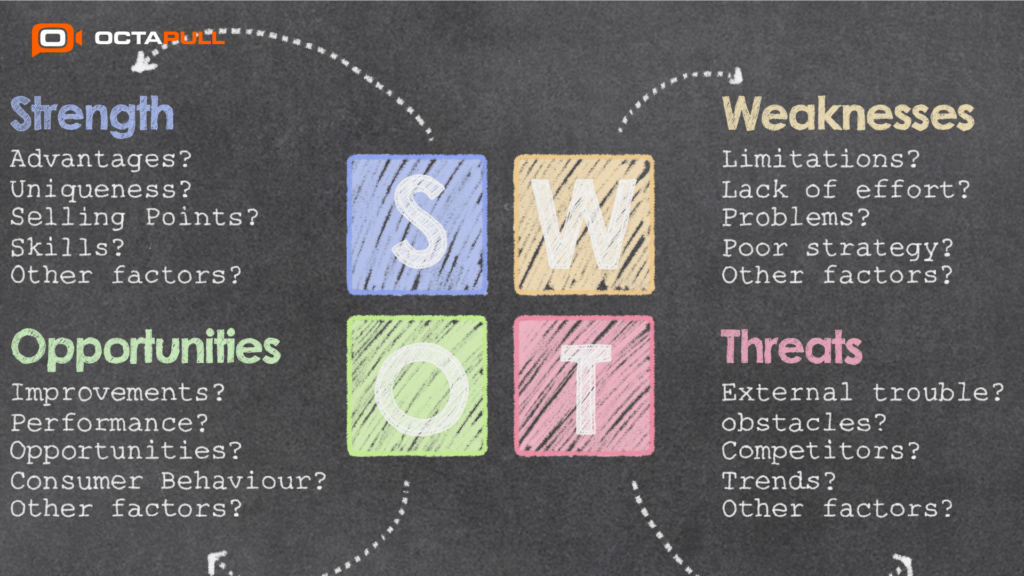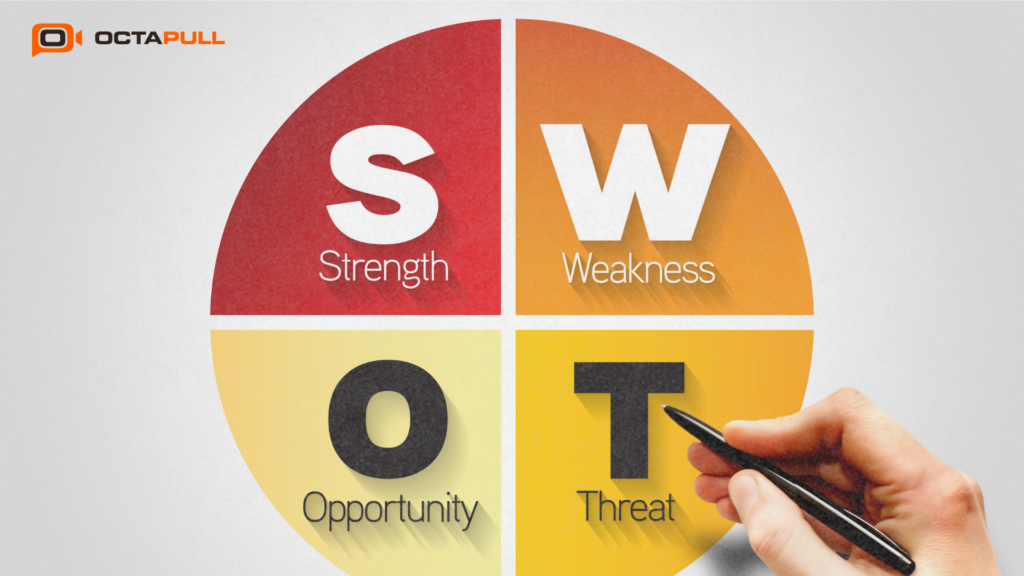Small companies can rely on SWOT Analysis as an important instrument. This process helps individuals assess their strengths and weaknesses while also enabling them to recognize emerging threats in a dynamic economic landscape.
It equips them with the readiness and competitiveness needed for strategic planning and competition in such a volatile economy.
In the comprehensive blog, we will go further into detail about the SWOT analysis for small business, highlighting the importance of SWOT. We will also look at some case studies that demonstrate how SWOT analysis can be used effectively in smaller businesses.
Understanding SWOT Analysis:
SWOT consists of strengths, weaknesses, opportunities, and threats. This structure offers small sized organizations a chance to conduct an objective analysis of where they are and what actions need to be taken in order to plan for the future.
What is SWOT Analysis?
Small business can find SWOT analysis very functional. This assists them in analyzing their strong and weak points, challenges that they will have to consider concerning their future.
What is The Importance Of SWOT Analysis For Small Businesses?

1. Strategic Planning:
SWOT analysis acts as a map for your business. It assists in setting objectives and goals within your organization’s capabilities. You can think of a business plan as navigation to success.
2. Identifying Strengths:
At this stage of the SWOT analysis, you can realize your own strength and move in this direction. You can know that you are strong in these areas and use this side of yours easily.
3. Recognizing Weaknesses:
You have also to tell yourself the truth in cases where your business requires improvement. This would mean that it is short of resources and may also involve the use of outdated modes of business as well as inefficient processes.
4. Spotting Opportunities:
There are various opportunities available. They include new markets and changes in customers’ tastes as well as new technologies. Rather, it is all about improving on your business.
5. Addressing Threats:
Identify external threats such as enhanced competition, reduced economy, and evolving legal framework on the business. That’s what it means to make sustainable plans and prepare for possible issues.
6. Distinctive Value Proposition:
With a SWOT analysis, it is easier to pinpoint what distinguishes your business in particular. This assists you in clear understanding what differentiates your business in a competitive market. Put in simple terms, it’s about understanding why a customer should pick your business over all the other competitors.
7. Resource Allocation:
Understanding your strengths and weaknesses allows you to allocate your resources appropriately. It enables you to invest in what matters the most. It’s regarding where to direct your money and efforts.
Step 2: External Assessment
Opportunities: Nevertheless, your business can leverage on external factors to foster growth and progress. Opportunities can come from various places, including market changes, technological development like blockchain technology, and industry innovations. For your business to grow, it is essential for you to locate these chances.
Threats: External dangers to your businesses are referred to as threats. Your business would be affected by competitive pressures, economic downturns, regulatory changes, shifts in consumer behavior, and any other adverse external conditions. Identification of such risks is important as they have negative implications on your business and you should have remedial measures.
Step 3: Cross-Examine Your Findings
Strengths and Opportunities:
Consider ways through which you will use your strengths to maximize the available opportunities. It’s all about leveraging your strength to take advantage of external opportunities.
Weaknesses and Threats:
Review strengths, weaknesses, and look out for future contingencies. Well, it is about looking for methods of overcoming your shortcomings or how to guard your company against exposures.
Step 4: Formulate Strategies
Maximize Your Strengths:
Take advantage of every opportunity using your strengths. That is, you may expand your range of products, enter more markets, or improve on customer services. It, in essence, translates to employing your strengths to advance your business.
Improve Weaknesses:
Develop plans to address weaknesses. In this regard, there are various fields, such as purchasing new equipment for use by employees, creating awareness programs, or improving procedures meant for smooth running of services.
Risk Mitigation:
Ensure to have measures like, coming up with back-up plans, diversification of products or engaging a lawyer to deal with potential threats and challenges. You use these measures to make alternative plans if things do not go according to plan.
Real Life Example

Case: Amazon
Amazon is a multinational technology and e-commerce company headquartered in the United States, known for its extensive online marketplace and cloud computing services through Amazon Web Services.
It’s one of the world’s largest and most influential companies, offering a wide range of products, services, and innovations to customers globally. Let’s look at SWOT analysis of Amazon;
Strengths:
- Global brand recognition
- Diverse product portfolio
- Technological innovation
- Operational efficiency
- Customer-centric approach
Weaknesses:
- Regulatory challenges
- Environmental impact
- High competition
- Labor issues
Opportunities:
- Global expansion
- Diversification into new sectors
- Digital advertising growth
- Sustainability initiatives
Threats:
- Intense competition
- Regulatory changes
- Counterfeit products
- Labor disputes
- Cybersecurity threats
As such, SWOT analysis can bring about positive changes in SME(Small and Medium-sized Enterprise)s’ competitive landscape. Leveraging on your strengths, overcoming the weakness, taking advantage of the opportunity, and managing the threat is what makes you understand the business.
Therefore, do not underestimate the significance of the SWOT analysis; it may determine what future you would have for your company.